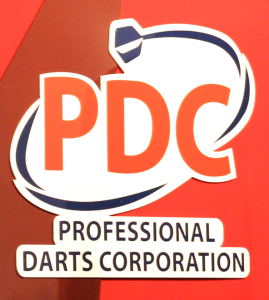State of Darts Before the Split: The 1980s into the 90s
 In the 1980s, darts enjoyed widespread popularity, particularly in the UK, where it had established itself as a staple of pub culture and garnered significant television viewership. During this time, the British Darts Organisation (BDO) was the sole governing body, overseeing both amateur and professional levels of the sport.
In the 1980s, darts enjoyed widespread popularity, particularly in the UK, where it had established itself as a staple of pub culture and garnered significant television viewership. During this time, the British Darts Organisation (BDO) was the sole governing body, overseeing both amateur and professional levels of the sport.
However, despite the sport’s popularity, the prize money, player conditions, and overall commercial exploitation were not on par with the growing viewer base and player expectations. As sports audiences worldwide became more accustomed to professionalized sports entertainment, many in the darts community felt that the BDO was not keeping pace with potential advancements, especially in terms of broadcasting and marketing the sport to maximize its appeal and profitability.
Formation and Catalysts for the Breakaway
By the early 1990s, dissatisfaction among the top players regarding the BDO’s management had reached a tipping point. Inspired by the commercial success of other sports undergoing transformations, such as football with the Premier League, 16 top professional players, including all existing world champions, decided to form the World Darts Council (WDC), later renamed the Professional Darts Corporation (PDC). The primary reasons for this shift were to enhance prize money, improve tournament conditions, and adopt a more modern marketing approach to make the sport appealing on a global scale.
Immediate Effects of the Split
The creation of the PDC in 1992 was initially received with controversy and resistance. The BDO’s response was to ban PDC players from participating in its events, leading to a deeply polarized community and several legal battles. These confrontations were primarily about player rights and the recognition of the PDC as a legitimate competitive body. The situation culminated in a landmark legal settlement in 1997, which allowed players to participate freely in events from both organizations, marking a significant step towards the professional autonomy of darts players.
Early Struggles and Triumphs
The PDC’s early years were fraught with challenges, including establishing its credibility and securing financial stability. Initial tournaments were smaller and struggled with attracting the same level of audience as BDO events. However, through strategic management and the allure of higher stakes and better player conditions, the PDC began to draw both top players and audiences away from the BDO. The rise of stars like Phil Taylor, who became synonymous with the PDC, helped solidify its reputation as the premier professional darts circuit.
Global Expansion and Significant Moments
Milestone Events and Breakthroughs
- First PDC World Championship (1994): The inaugural PDC World Championship marked a crucial moment for the new organization, setting the stage for its future success. Held at the Circus Tavern in Purfleet, this event symbolized the PDC’s commitment to becoming the leading body in professional darts.
- Televised Darts Goes Global: The decision to broadcast the PDC World Darts Championship globally expanded the sport’s reach and attracted a worldwide audience. This move was pivotal in promoting darts as a serious and thrilling spectator sport.
- The Powerhouse Phil Taylor: Phil Taylor’s victory in multiple World Championships, particularly his first PDC title in 1994, and his continued dominance over two decades, significantly boosted the PDC’s profile. Taylor’s rivalry with Raymond van Barneveld, including their epic showdown in the 2007 World Championship final, is often cited as one of the greatest matches in the history of darts.
- Expansion into New Markets: The introduction of the Premier League Darts in 2005 and its subsequent tours in Europe and the Middle East exemplified the PDC’s strategy to globalize the sport, bringing professional darts to new audiences and markets.
Notable Players and Rivalries

- Phil Taylor: Known as “The Power,” Taylor’s incredible skill and competitive nature drove his record of 16 World Championships, making him the face of professional darts for many years.
- Raymond van Barneveld: The Dutch legend, often known simply as “Barney,” was one of Taylor’s fiercest competitors. Their rivalry peaked during the 2007 PDC World Championship final, where van Barneveld triumphed over Taylor in a sudden-death leg, considered one of the greatest finals in darts history.
- Michael van Gerwen: Emerging as a powerhouse in the 2010s, van Gerwen has dominated the sport with his aggressive playing style and sharp precision, winning multiple PDC World Championships and becoming a major draw for fans.
- Gary Anderson: The Scottish player is known for his smooth throw and calm demeanor, winning the PDC World Championship in 2015 and 2016, and playing a part in one of the most memorable matches in PDC history against van Gerwen in the 2017 World Championship semi-finals.
Cultural and Sporting Impact
The PDC’s growth paralleled significant shifts in global sports consumption, where audiences increasingly demanded more engaging, fast-paced, and accessible sports entertainment. The PDC’s adaptation to these trends, coupled with high-stakes rivalries and charismatic stars, has helped darts transcend its pub-game roots to become a major sporting spectacle.
